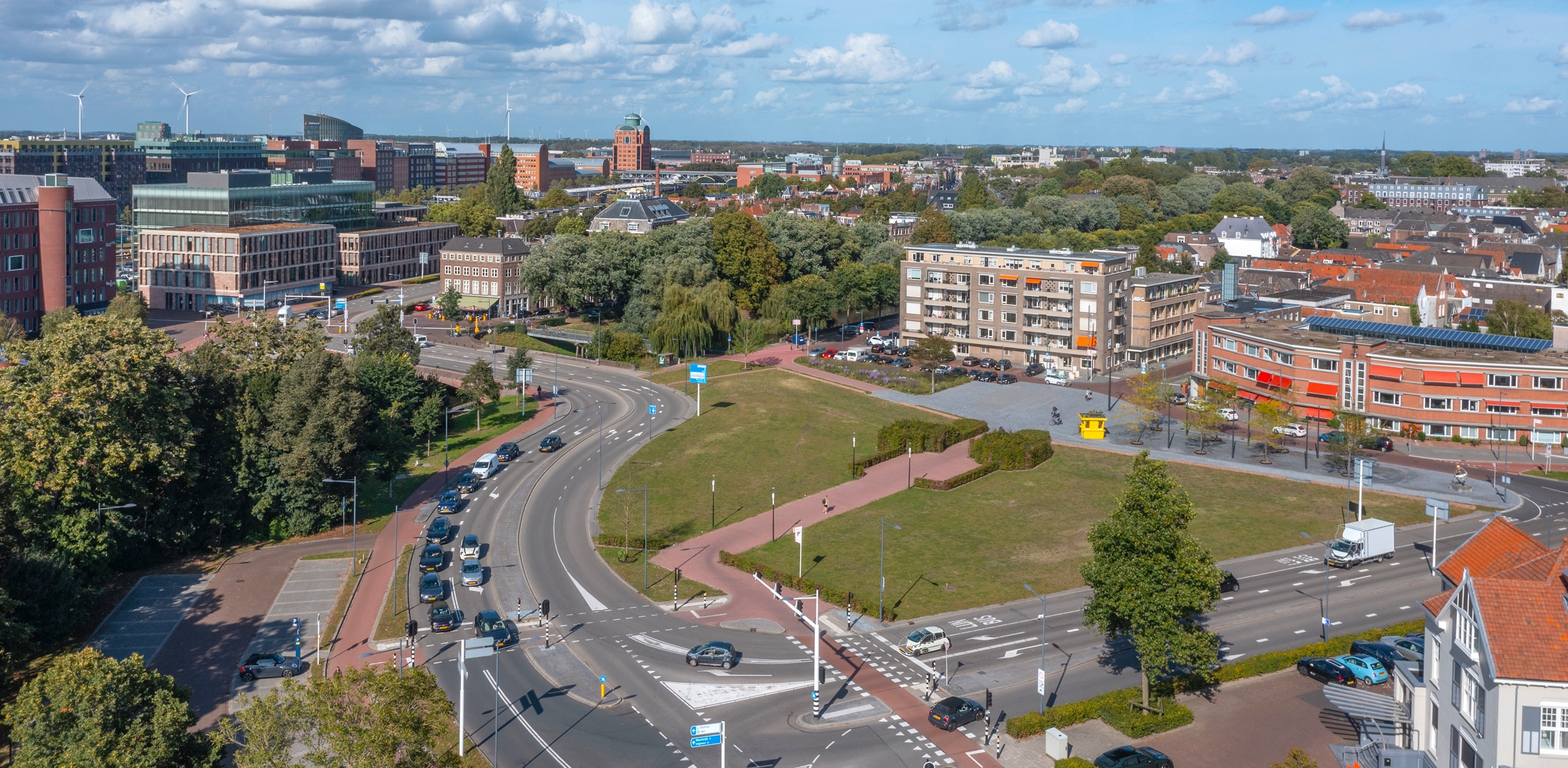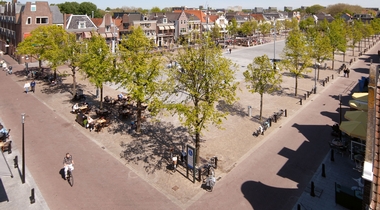's-Hertogenbosch
Client
- gemeente 's-Hertogenbosch
Surface
- 1 ha
Year of design
- 2017 - current
Year of fulfilment
- 2021 - current
Competence
- public space
- squares
The Wilhelminaplein, the former fortress front with the archaeological remains of the Pieckepoort in the underground, is an important place in the city in a cultural-historical sense; one of the three corners of the historic fortress and traditionally the gateway to the city from the south. The municipality of 's-Hertogenbosch has the ambition to turn this historic place into a pleasant place to stay again, with the Pieckepoort as the source of inspiration. This involves a combination of restoration, reconstruction and the addition of contemporary elements and functions.
The Wilhelminaplein target plan that MTD landscape architects and Hans van Heeswijk architecten developed in 2017 together with the Heritage Projects Planning Team of the municipality of 's-Hertogenbosch, forms a possible final picture. The aim is to realize a new fortified park here as part of the fortifications of 's-Hertogenbosch. Because the available budget is insufficient for the realization of the entire plan, the plan will be realized in phases. Each phase focuses on a sub-area. A number of elements are realized in their definitive form and a number of elements in a temporary form, often with reuse of materials present on the square. The first phase of the Wilhelmina Park, built from the end of 2020. With the relocation of the cycling and walking route through the heart of the area, the city entrance from Vught, via the Pieckepoort, has been restored. To make the feeling of inside/outside the original fortress recognizable, the position of the earthen ramparts and the location of the Pieckepoort have been emphasized, with a low retaining wall at seat height on the city side. The former rampart has been (temporarily) made recognizable by a slight slope against this retaining wall. The contours of the Pieckepoort have been (temporarily) made recognizable by means of beech hedges. The lost watchman's house or patent house just inside the gate was a characteristic building for a long time. It is referenced by the construction of a natural stone podium of 0.40 meters high with the floor plan of the house. It is a place where small-scale cultural events can take place. Plaques here provide insight into the development of the area over the last century and a half. On the east side of the Pieckepoort, a semi-paved tree square was created in this phase as a 'remembrance' of the Galgenveld. This creates a square in front of the gate, with an important line of sight on Vughterstraat. With the plans for the Wilhelmina Park, efforts have been made to load this city entrance and place to stay with significance for the city today. This does justice to the prominent significance of the former Piecke Gate. The Galgenveld forms a leafy meeting place, surrounded by natural stone in a semi-paved area. This has created a residential area with a natural stone bench that offers space for residents and visitors. A place to play boules. Small activities such as book markets can be held on the adjacent square.
The green character of the Wilhelmina Park has been emphasized. This has been done by planting hedges and a number of trees, which contribute to combating heat stress. This allows the ambient temperature to be lowered by a few degrees. The choice of trees and their position are geared to preserving the view from the apartment buildings, which are adjacent to the current field.












